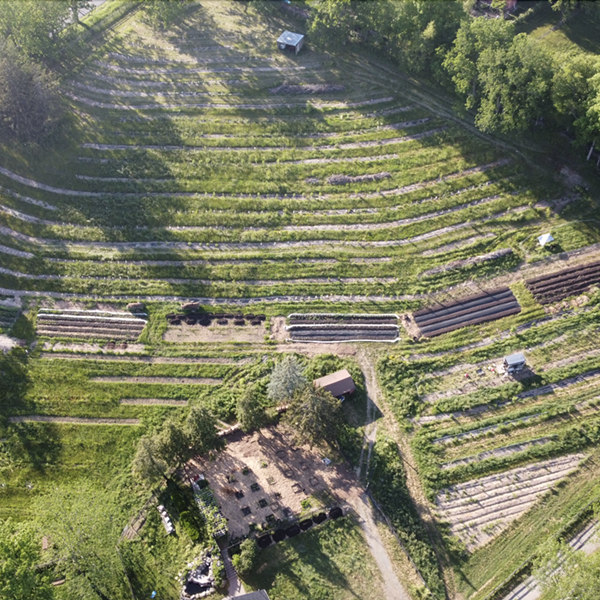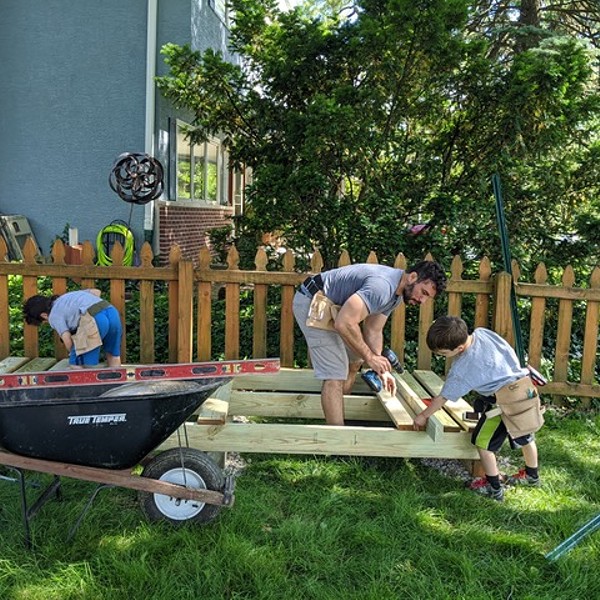Principal garden tip: Just Do It. Do—synonymous with sow and plant—something in your backyard, front yard, field, sidewalk median planter strip, or container. If you do something edible, sustenance for the body complements nourishment for the soul. Start small to not overwhelm, but do “think outside the philosophy of the last 100 years that emphasized lawn with a few ornamentals and puffy shrubs,” advises Diane Greenberg of Catskill Native Nursery. Cultivate curiosity about culture and companion plantings of your selected plants. Gardens can be as wild, profuse, and diverse as nature itself. Ethan Roland of Appleseed Permaculture urges “transformation of gardens into abundant, thriving ecosystems. Mimic natural systems and their incredible diversity and plant communities rather than monocultures. Nature never plants single plants.” Spend more time in the garden but “less of it struggling against nature,” suggests Mark Oppenheimer of the Inner Garden. “Your garden should be a retreat, not a battle.”
1. Think & Plan
Avid gardeners start thinking (really, dreaming) about gardens in January when seed catalogs arrive. Plot the square footage of your garden. Draw a plan of what goes where. Compose a Seed Wish List by putting pen to paper rather than willy-nilly earmarking followed by rampant ordering. This will save money, reduce seed waste, and bring you back to reality regarding available space. Pooling seed orders with friends and neighbors also helps reduce seed waste and shipping costs. Nancy Bubel’s The New Seed Starter’s Handbook is indispensable.
Inventory items from seeds to tools. Most seeds when stored properly in a cool dark place have a shelf life of one to two years. Also check the condition of garden equipment like shovels, hoes, spades, rakes, pruners, and shears. If you didn’t clean and oil them up after last year’s season, do so now. If you’ve been considering another tool for the collection, like a spading fork, then purchase it before you get out into the field.
2. Reconnaissance
Pull on the Wellies or Muck Boots and head out into the garden. “The first thing I would recommend,” says Jane Lehmuller at Ninebark LLC, “is for people to get outside and assess the damage from heavy, wet snow. Now is the time to prune those broken branches and any suckers or waterspouts.” Mel Bellar of Andes-based Zone 4 Landscapes advises: “Conifers, particularly very upright varieties, tend to have branches that get weighed down and misshapen with ice or heavy snow. Tie up the branches with some twine—green is nice because it disappears—until they regain their shape or stay in place on their own.”
3. Prune
Know for what you prune. Pruning is the art of regulating and controlling growth, flowering, and fruiting. Different plants require different pruning methods and timing and keeping it all straight is much easier with a good book on pruning. Early spring pruning is practical because it does not depend on thawed ground and absent foliage can’t complicate matters. First, prune off any branches on trees and shrubs that didn’t make it through winter. “Check if a branch is dead by scraping off a little of the bark off. See green under the bark? It is alive. See brown when you scrap down, it is dead,” says Greenberg. Spring is opportune to prune shrubs and trees that don’t bloom on old wood. Bellar begins with cutting off the prior year’s blooms and taking out any dead wood. “Dead wood is an invitation to pest and disease. Take out crossed branches and thin out up to one third of the branches with an eye toward creating a nice shape and encouraging new growth for a fluffy, full plant.” For edibles, Lehmuller advises gardeners to “prune fruit trees for a better yield and summer and fall blooming shrubs for a better shape but don’t touch any spring blooming shrubs until after they bloom.”
4. Vernal Revamp
Mundane but necessary chores such as raking leaves and other debris out of beds, evening out mulch, and smoothing gravel pathways become opportunities to contemplate editing and restructuring. Greenberg advises “keeping an eye on the beds over the next few weeks, pulling up any perennials or shrubs that didn’t survive the winter. Move plants that aren’t doing well to better locations before they break bud. Basic rule—if it blooms in the spring, move it in the fall. If it blooms in the fall, move it in the spring. Never move a blooming plant.” Spring’s cool weather is suitable for the labor-intensive tasks of dividing and moving. Ornamental grasses such as maiden or switch grass prefer to be divided in spring, and after a couple of years’ establishment, a single purchased plant can yield a mass planting. After digging the root ball up, a straight edge shovel or pruning saw will effectively divide the clump. Perennials can be divided in spring or fall, and strong opinions abound on optimal times, “but it often actually depends on how much time I have and what I feel like doing,” admits Bellar.
















